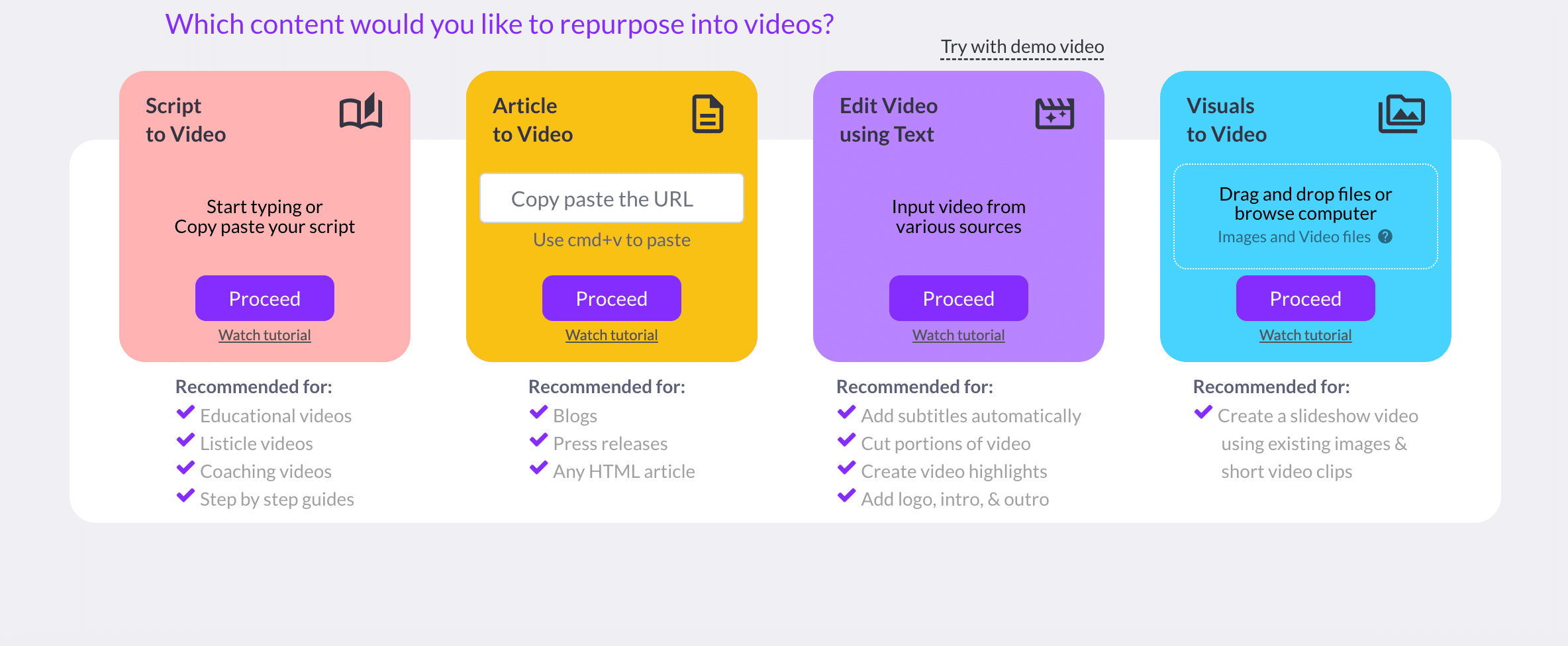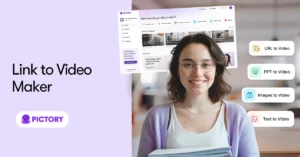In today’s fast-paced business environment, innovation is no longer a luxury, but a necessity.
The ability to stay ahead of the curve and adapt to rapidly changing market conditions is crucial for businesses to thrive and maintain a competitive edge.
But how can organizations harness the power of innovation and ensure their success?
From embracing disruptive innovation and fostering a culture of innovation within the organization to leveraging artificial intelligence and emerging technologies, we’ll also delve into the importance of protecting intellectual property and measuring innovation performance and impact.
Short Summary
Businesses must embrace disruptive innovation to remain competitive and create new markets.
AI, emerging technologies, collaboration, and knowledge sharing are key strategies for driving innovation in businesses.
Protecting intellectual property is essential for fostering long-term success through innovative ideas.
Embracing Disruptive Innovation for Competitive Advantage

Disruptive innovation is a powerful force that can challenge established norms and create new markets, providing businesses with a competitive edge.
Business leaders need to recognize the potential of disruptive innovation and incorporate it into their business models to stay ahead of the curve.
As history has shown, companies that have embraced disruptive innovation, have become giants of their sectors, such as:
Microsoft
Google
Apple
Samsung
Amazon
Through creative ideas, we have been able to create new and innovative solutions that have changed the way we live and work.
However, disruptive innovation is not just about developing groundbreaking products or services, but also about fostering an innovative culture within the organization.
This involves nurturing a mindset that encourages creative thinking, collaboration, and knowledge sharing among employees.
By doing so, businesses can empower their workforce to generate innovative ideas and solutions that can propel the company forward and ensure its long-term success.
Identifying Opportunities for Disruptive Innovation
To stay ahead of the curve, it is essential to identify opportunities for disruptive innovation.
This involves recognizing market gaps, understanding customer needs, and staying informed about emerging trends and technologies.
One way to do this is by keeping a close eye on customer behaviors, industry trends, and competitor analysis.
By monitoring these factors, businesses can gain valuable insights into potential areas of disruption and innovation.
Emerging trends such as AI and machine learning, for example, offer businesses a wealth of potential for innovation and growth.
By staying abreast of these developments, companies can identify new ways to harness these technologies to create innovative products and services that cater to the evolving needs of their customers.
In addition, collaboration and knowledge sharing can play a vital role in fostering innovation, as it allows for the exchange of diverse perspectives and ideas that can lead to the development of groundbreaking solutions.
Implementing Disruptive Innovation
Implementing disruptive innovation requires a strategic approach, risk-taking, and a willingness to invest in new ideas.
This involves assessing the current processes, products, and services to identify limitations and areas for improvement or innovation.
Additionally, businesses should be proactive in staying ahead of the curve by developing unique products and services that set them apart from their competitors.
Capitalizing on unexpected opportunities is also crucial for driving disruptive innovation.
Businesses should be open to embracing novel concepts and taking calculated risks to invest in cutting-edge technologies and ideas that could potentially result in disruptive innovation.
By partnering with other companies or startups, businesses can further explore innovative solutions and bring new products or services to the market more quickly and efficiently.
Business Model Innovation: A Key to Success

Business model innovation is another crucial factor for staying ahead of the curve.
It involves:
Devising, modifying, or refining the way a business creates, delivers, and captures value, focusing on its core business
Satisfying customers
Standing out from competitors
By implementing these strategies, businesses can unlock their potential and boost their success by optimizing their company’s business processes.
Companies such as Airbnb, Uber, and Amazon are prime examples of successful business model innovation.
These businesses have effectively utilized technology to develop novel business models and tap into new markets.
By continually assessing customer needs, evaluating industry trends, and leveraging emerging technologies, businesses can identify opportunities for business model innovation and drive long-term growth.
Benefits of Business Model Innovation
The benefits of business model innovation are numerous, including the capacity for adaptability, differentiation, and long-term growth.
Adaptability refers to the ability to rapidly and effortlessly alter to fluctuating customer needs and market trends, ensuring that businesses remain relevant and competitive in the face of constant change.
Differentiation, on the other hand, is the ability to craft distinct products and services that distinguish a business from its rivals, thereby providing a competitive edge in the marketplace.
Additionally, long-term growth is the capacity to maintain success over an extended period by persistently innovating and adjusting to fluctuating market conditions.
By embracing business model innovation, businesses can position themselves for sustained success and stay ahead of the curve by implementing an effective business strategy.
Examples of Successful Business Model Innovation
Several companies have achieved remarkable success through business model innovation.
Netflix, for example, disrupted the traditional video rental industry by offering a streaming service that provided unlimited access to movies and TV shows for a monthly subscription fee.
This innovative model allowed Netflix to tap into a new market and eventually dominate the streaming industry.
Uber and Airbnb are other notable examples of successful business model innovation.
Uber revolutionized the transportation industry by connecting riders with drivers through a mobile app, while Airbnb transformed the hospitality industry by allowing homeowners to rent out their properties to travelers.
Both companies leveraged technology to create new business models that disrupted their respective industries and created new markets.
These examples demonstrate the power of business model innovation and the potential it holds for businesses to stay ahead of the curve.
Looking for more ways to drive success within your business?
Read How A Solid Social Media Strategy Boosts Business Success.
Fostering a Culture of Innovation within the Organization

Creating a culture of innovation within an organization is essential for driving success and maintaining a competitive edge in today’s fast-paced business environment.
A strong innovation culture encourages employees to think creatively, collaborate, and share knowledge, which in turn generates new ideas and solutions that can propel the company forward.
Senior executives play a critical role in fostering an innovative culture by promoting collaboration, knowledge sharing, and a growth mindset among employees.
By demonstrating their commitment to innovation and supporting employees in their innovative efforts, senior leaders can create an environment where creativity and innovation thrive, ensuring the organization’s long-term success.
Encouraging Collaboration and Knowledge Sharing
Encouraging collaboration and knowledge sharing within an organization is crucial for fostering a supportive environment for innovation.
By promoting the exchange of diverse perspectives and ideas, organizations can generate new ideas and solutions that drive business growth and success.
Collaboration and knowledge sharing can take various forms, from team brainstorming sessions to cross-functional projects and workshops.
Continuous learning is also vital for fostering an innovative culture.
By providing employees with opportunities to acquire new skills and knowledge, organizations can equip them with the tools they need to develop innovative ideas and solutions.
This can include offering training programs, and online courses, or collaborating with external partners to provide employees with valuable insights and expertise.
Leveraging Artificial Intelligence and Emerging Technologies

Leveraging artificial intelligence (AI) and emerging technologies can drive innovation, improve efficiency, and create new business opportunities.
AI, for instance, utilizes computers and machines to replicate the problem-solving and decision-making abilities of the human brain, offering a range of potential benefits to businesses.
By staying informed about these emerging technologies and their potential applications, businesses can:
Identify new ways to harness their power
Drive innovation
Improve efficiency
Create new business opportunities
AI-driven innovation can be seen in various applications, such as automated customer service, predictive analytics, and natural language processing.
These technologies have the potential to revolutionize the way businesses operate, providing new opportunities for growth and efficiency.
By embracing AI and other emerging technologies, businesses can stay ahead of the curve and maintain a competitive edge in a rapidly evolving market.
AI-Driven Innovation Examples

AI-driven innovation can be seen in a variety of industries and applications.
For instance, chatbots have transformed the way businesses provide customer service, offering instant, automated assistance to customers around the clock.
Predictive analytics, another AI-driven innovation, enables businesses to gain insights into customer behavior and preferences, allowing them to tailor their products and services accordingly.
Automation is yet another example of AI-driven innovation.
From self-driving cars to robotic process automation, AI-powered systems are increasingly being used to streamline business processes and improve efficiency.
By leveraging AI and other emerging technologies, businesses can drive innovation, reduce costs, and stay ahead of the curve.
Assessing the Potential Impact of Emerging Technologies

Understanding the capabilities, limitations, and potential applications of emerging technologies is crucial for businesses looking to leverage these innovations for growth and success.
By assessing these factors, businesses can make informed decisions about which technologies to invest in and how to leverage them for maximum impact.
One way to evaluate the potential impact of emerging technologies is by conducting a thorough analysis of their potential return on investment (ROI).
This involves weighing the costs of implementation and maintenance against the potential benefits and rewards, such as increased efficiency, improved customer experience, and new business opportunities.
By carefully assessing the potential impact of emerging technologies, businesses can make strategic decisions that align with their goals and objectives, ensuring the long-term success of their innovation efforts.
Protecting Intellectual Property in the Age of Innovation
In today’s competitive business landscape, protecting intellectual property (IP) is more important than ever. IP encompasses the creations of the mind, such as:
Inventions
Literary and artistic works
Designs
Symbols
Names used in commerce
Ensuring the effective management and protection of IP is essential for maintaining a competitive edge and ensuring the success of innovative ideas.
Businesses must employ strategies to protect their IP, such as registering trademarks and copyrights, utilizing non-disclosure agreements, and monitoring potential infringements.
By effectively managing and protecting their IP, businesses can safeguard their ideas and innovations from unauthorized use or misappropriation by competitors, ensuring the continued growth and success of their organization.
Importance Of IP Protection

IP protection is essential for:
Fostering innovation
Safeguarding business assets
Enabling consumers to make informed decisions
By protecting their IP, businesses can ensure that they can reap the benefits of their efforts and creativity without the risk of unauthorized use or copying.
Moreover, IP protection can help attract investment by providing investors with the assurance that their investments are protected from unauthorized use or copying.
This can be particularly beneficial for startups and small businesses seeking to secure funding for their innovative ideas and solutions.
In summary, IP protection is crucial for businesses looking to maintain a competitive edge and foster innovation, ensuring their long-term success in today’s rapidly evolving market.
Strategies For Effective IP Management
Effective IP management involves a combination of strategies to ensure the protection of a business’s intellectual property. These strategies include:
Conducting IP audits to identify and assess existing IP assets
Securing patents to protect inventions
Monitoring potential infringements to safeguard against unauthorized use
In addition to these strategies, businesses should also consider creating a legal framework to protect, enforce, and value their IP rights and aligning their IP strategy with their overall business goals.
By employing these strategies, businesses can effectively manage and protect their IP, ensuring the long-term success of their innovation efforts and maintaining their competitive edge in the market.
Measuring Innovation Performance and Impact

Measuring innovation performance and impact is crucial for understanding the effectiveness of innovation strategies and making necessary adjustments.
By regularly assessing the performance of ongoing innovation efforts, businesses can:
Identify areas of success
Identify opportunities for improvement
Ensure that their innovation strategies remain aligned with changing market conditions and business objectives.
To measure innovation performance, businesses can use key performance indicators (KPIs) that align with their business goals and innovation objectives.
Examples of such KPIs include:
Customer satisfaction
Employee engagement
Product development cycles
Profitability
By monitoring these metrics, businesses can gain valuable insights into the progress and success of their innovation efforts, enabling them to make informed decisions about future initiatives and resource allocation.
Selecting Relevant KPIs For Innovation
Selecting relevant KPIs for innovation involves identifying metrics that align with the organization’s business goals and innovation objectives.
These KPIs should provide meaningful insights into the progress and success of ongoing innovation efforts, enabling businesses to make informed decisions about resource allocation and strategy formulation.
Some examples of relevant KPIs for innovation include:
The proportion of total staff time allocated to high-yield innovation activities
Total staff hours dedicated to high-yield innovation
Return on investment (ROI)
Time to market
Idea generation rate
By monitoring these metrics, businesses can assess the success of their innovation initiatives, identify areas for improvement, and make necessary adjustments to ensure the continued growth and success of their organization through management innovation.
Monitoring And Adjusting Innovation Strategies

Monitoring and adjusting an innovation strategy is essential for ensuring continuous improvement and alignment with changing market conditions.
Businesses should regularly:
Assess the performance of their innovation strategies
Gather feedback from stakeholders
Adjust as necessary to ensure that their strategies remain effective and relevant.
One notable example of successful monitoring and adjusting of innovation strategies is Amazon’s utilization of data analytics tools to monitor customer behavior and adjust their product offerings accordingly.
By staying agile and responsive to customer needs and market trends, Amazon has been able to maintain its position as a market leader and continue to drive innovation and growth.
How Pictory Innovates Video Marketing

Pictory is the only video editing tool you need to innovate your video marketing strategy.
With many easy-to-use features such as Script to Video and Edit Videos Using Text, Pictory will help you maintain a competitive edge in today’s fast-paced business environment.
Offering cutting-edge video editing solutions, Pictory enables businesses to create engaging video content quickly and easily, saving time and resources while maximizing the impact of their marketing efforts.
Anyone with any level of editing experience can make professional video content that delivers their message in an engaging way.
Script to Video In Minutes
Pictory’s Script to Video feature is a prime example of how businesses can harness innovation to drive success.
Upload existing text, be that emails, product updates, or meeting notes, and Pictory will create a fully realized video in minutes
Script to Video offers the following features:
Generates professional quality videos from text scripts in minutes
Licensed images are automatically applied
Auto-captioning and AI voiceovers
Provides users with a library of customizable video templates.
An easy-to-use editing suite for further customization, including adding personalized branding
This efficient and cost-effective solution allows businesses to:
Create compelling video content for marketing, training, and other purposes
Eliminate the need for expensive video production services
Impressive Edits. Simplified Editing.
Pictory is an online editor with a wide range of tools for you to utilize in your video marketing including:
Adding music to videos
Adding AI or personalized voiceover
Utilizing personalized branding
Customizable templates for captions/subtitles
Preview work in seconds
Produce superior video content with efficiency
Download in a variety of formats, or upload straight into Hootsuite
The software provides a cheap, user-friendly solution for editing and producing videos.
Pictory automates the hard parts of video marketing, making it an ideal solution for businesses looking to create high-quality video content without breaking the bank.
Summary
In conclusion, innovating both products and processes is essential for businesses to thrive in today’s competitive environment.
Businesses must embrace disruptive innovation, nurture an innovative culture, and harness emerging technologies to remain competitive.
Safeguarding intellectual property, evaluating innovation’s impact, and adapting strategies ensure sustained growth.
Agility, responsiveness, and continuous enhancement empower businesses to realize their potential, foster growth, and excel in the dynamic modern business environment.
A comprehensive and exciting video content strategy is just one way that businesses can embrace the current landscape.
Sign up for a FREE trial of Pictory today to explore how our online video editor can transform your digital marketing strategy in minutes.
Frequently Asked Questions
How do you drive innovation and business growth?
Creating a culture of innovation, cultivating a growth mindset, and encouraging collaborative experimentation are key strategies to drive innovation and business growth.
Teams must adapt quickly to changing environments while constantly iterating on their ideas to drive long-term success.
By valuing transparency, innovation, and continuous improvement, businesses can unlock new opportunities for growth.
What is important for entrepreneurs to keep track to stay ahead of the curve?
Staying ahead of the curve requires staying informed about industry news and trends.
Keep up-to-date by reading industry publications, attending events, and following thought leaders on social media.
Staying informed is essential for staying ahead of the competition and staying ahead of the curve.
It’s important to stay up-to-date on industry news.
What are the key drivers of the success of the innovation?
Diverse workforces that bring different perspectives are key to successful innovation, as research has shown that the more diverse organizations are, the more likely they are to display creativity.
Organizations that embrace diversity are better able to identify and capitalize on opportunities, as well as anticipate and respond to changes in the marketplace.
They are also more likely to attract and retain top talent, as employees are increasingly looking for employers that value diversity and inclusion.
What is disruptive innovation?
Disruptive innovation is a powerful force that creates new markets and provides businesses with an edge, challenging established norms.
It can be a difficult concept to grasp, but understanding the basics of disruptive innovation can help businesses stay ahead of the competition.
Disruptive innovation is a process of introducing new products or services.
What are some examples of business model innovation?
Business model innovation has been seen in streaming services like Netflix, ride-sharing platforms like Uber, and home-sharing services like Airbnb.








